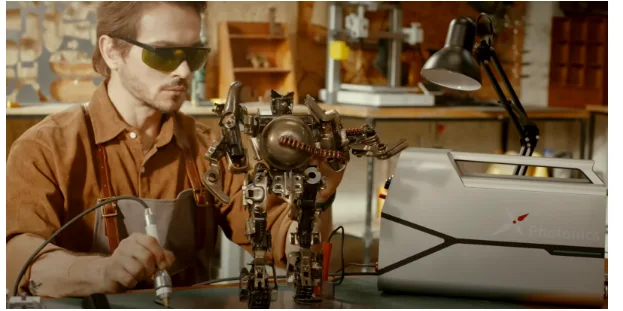How Does Welding Work? The Science Behind Fiber Lasers

Welding has never left metalworking without support, as it has enabled raw metal fragments to be unified as durable and solid structures. Traditionally, metals were welded either by flame or an electric arc, or filler metal. Nevertheless, due to new inventions, fiber lasers have reached new levels in the profession as they are faster, more precise, and less heat-distorted.
To the interested, the question of how does welding work? Creates an exciting mix of physics, engineering, as well as modern technology. Fiber lasers direct the light energy in a focused beam, unlike traditional means, which melt metal pinpointedly with the resulting clean and durable welds.
The Precision Power of Fiber Lasers
Fiber lasers do not generate excessive heat and splatter as opposed to other methods of welding, which are older and release the energy in a broad beam, which does not hit the desired target. This accuracy helps to reduce damage to the surrounding material, post-weld clean-up, and results in a stronger joint.
Fiber lasers are universal, and they can work with various materials, including thin sheets, as well as metals having greater density, like industrial-grade plates. This versatility enables them to be a very useful device in contemporary production, in automotive repairs, and even the small craft work.
Why the Process Is Simple and Scientifically Complicated
Laser welding appears to be almost magic at the beginning of the discussion. Light rays strike the metal, fuse it, and create a flawless seam. However, the science of it is complex. The fiber lasers can produce high power levels of energy by passing light through optical fibers that have been doped with rare-earth elements. This beam is then kept in the metal surface, forming a deep and narrow melt pool.
Factors that the operator controls include the beam intensity, focus, and speed of movement. Even minor changes can radically influence the quality of welds, which proves the relevance of a balance between technology and human skills in the given process.
Safety and Efficiency: Laser Welding Revises the Rules
It might even seem that high-intensity light is dangerous, and it can be in the case of a lack of the requisite precautions. The eyes and the skin should be protected with laser protective glasses and carefully calibrated equipment. However, when properly applied, fiber lasers enable welding to be faster and cleaner, saving on wasted energy and material.
The lower total heat generation in the process means the possibility of warping and damaging areas around is less people are reduced. This also renders fiber lasers especially viable to fragile parts, such that precision is paramount, thus ensuring that welders can produce professional outcomes at the same time.
XLaserlab: New Technology of Welding

XLaserlab is one of the leaders in the laser welding industry today. Their enhanced fiber lasers have user-friendly controls together with high output performance, thus enabling beginners and experts to operate safely and effectively. Using a combination of high precision and a safety level that builds on the risks ensures that the welders are free to work on quality without fear of the associated risks.
Fiber Laser Welding is used in this way mostly in the following applications.
Industrial giants are not the only users of fiber lasers. Their multi-purpose has diversified to include a small workshop and special projects. Common media are:
- Auto repairs, particularly thin component panel repairs.
- Artistic metalwork and jewelry that needs minimal heat welding.
- Fabrication at a small scale, where efficiency and accuracy are of great importance.
- Machinery and tools maintenance and repairs.
These illustrations indicate that knowledge of how welding works with fiber lasers opens the doors in many industries, both in manufacturing and arts and crafts.
The interaction of Technology and Technique
It is not only the machine that can allow successful laser welding, but rather the operator using it. The use of the angle, speed, and strength of the beam is mastered to make sure that the metal fuses properly, forming a smooth joint. With operator skill and fiber laser technology, one can even complete complex welds, making sure that the number of errors is lowered and that the overall quality is improved.
Why Fiber Lasers are transforming the welding process.
Fiber lasers not only indicate precision; they introduce uniformity, efficiency, and purer results. Conventional welding techniques may need further finishing to eliminate spatter or to fill in heat distortion. These steps are also reduced in number with fiber lasers, which save time and costs.
Additionally, the technology is green and consumes less energy, thereby becoming the best in terms of sustainability, in addition to productivity in the modern workshops.
Final Thoughts
The fiber laser technology keeps on advancing at a high rate, with the advancement in power, speed, and precision. The lower the price of equipment, the more small businesses and hobbyists have access to this high-tech tool, and are diversifying the applications of this device outside of the industrial world.
By understanding how welding goes with fiber lasers nowadays, operators are equipping themselves with the future when laser-related methods will become the norm in the industries. This safety, efficiency, and precision will see to it that fiber lasers will continue being a pillar in modern metalworking in the coming years.
